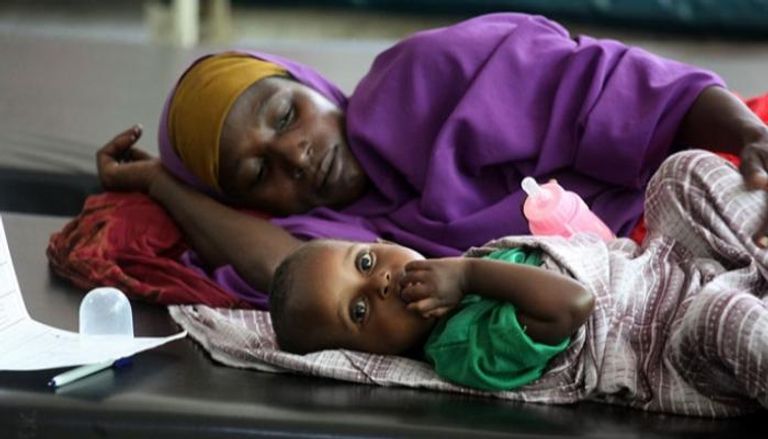Maternal Mortality in Africa: A Preventable Tragedy That Persists
Edition : Widad wahbi
In 2020, approximately 800 women died each day from causes related to pregnancy and childbirth—most of them preventable. According to global estimates, nearly 287,000 maternal deaths occurred that year, with about 95% of these fatalities taking place in low- and lower-middle-income countries.
Sub-Saharan Africa bore the heaviest burden, accounting for approximately 70% of maternal deaths worldwide—an estimated 202,000 cases. Together with South Asia, the two regions represented 87% of the global total. The situation underscores the profound disparities in access to quality healthcare and the urgent need for action.
While there have been efforts to reverse this trend, the progress has been uneven. Between 2000 and 2020, maternal mortality rates dropped by 34% globally, and by 33% in Sub-Saharan Africa. Some regions, such as Eastern Europe and South Asia, achieved reductions of up to 70%, yet maternal deaths remain alarmingly high in fragile contexts and conflict-affected areas. In countries like South Sudan, Somalia, and the Central African Republic, maternal mortality rates exceeded 1,000 deaths per 100,000 live births—more than 15 times the global average.
Behind the statistics lie systemic failures. Many women, especially in remote or impoverished communities, lack access to skilled health personnel, timely emergency care, or essential medical supplies. In low-income countries, only 68% of births are attended by trained professionals, compared to 99% in high-income settings. The lifetime risk of a woman dying from maternal causes is 1 in 49 in low-income countries, compared to 1 in 5,300 in wealthier nations.
Most maternal deaths result from five main complications: severe bleeding (often post-partum), infections, high blood pressure during pregnancy (pre-eclampsia and eclampsia), delivery complications, and unsafe abortions. These conditions are largely preventable or treatable with timely, high-quality medical care. Ensuring access to skilled birth attendants, emergency obstetric services, and safe postnatal care could save countless lives.
Beyond clinical factors, maternal mortality reflects deep-rooted social and systemic inequalities. Harmful gender norms, limited education, poverty, and geographic barriers all contribute to poor maternal health outcomes. Weak health systems, understaffed facilities, and inadequate accountability mechanisms further hinder progress.
The COVID-19 pandemic has also played a role in stalling progress, though data shows that the plateau in maternal mortality began before the pandemic. Service disruptions, reduced access to care, and increased vulnerability among pregnant women may have worsened outcomes during the health crisis, though full global data remains incomplete.
The international community, under the Sustainable Development Goals (SDG), has committed to reducing the global maternal mortality ratio to fewer than 70 deaths per 100,000 live births by 2030. Yet achieving this goal would require an annual reduction rate of 11.6% ,a pace rarely seen.
The World Health Organization continues to prioritize maternal health by promoting evidence-based guidelines, supporting national health policies, and strengthening data collection and accountability. Their approach emphasizes eliminating avoidable maternal deaths, addressing systemic inequalities, and ensuring universal access to respectful, high-quality, and affordable maternal and reproductive health services.
Maternal mortality is not an inevitable outcome it is a reflection of where the world chooses to invest its resources, compassion, and commitment. As the decade to 2030 advances, renewed urgency and coordinated action are essential to turn the tide on this silent but persistent crisis.
-

Libya: Delayed Municipal Elections Finally Held in Seven Northwestern Towns
Edited By : Tendai Zola Libyans in seven municipalities in the country’s northwest were finally able to cast their votes on... Politics -

Africa: Fight for Justice Over Bolloré’s Ports Empire
Edited By: Fatimatou babdinA coalition of African civil society groups has launched a landmark legal battle in Paris, seeking accountability... Economy -

The Fight to Bring Africa’s Art Home
Edited By : Widad WAHBIFor over a century, thousands of African artifacts, including masks, statues, and royal thrones, were taken... Video -

Bijagós Islands: A Hidden Cultural and Ecological Gem Emerges from Obscurity
Edited By: Fatomatou konèOff the coast of Guinea-Bissau lies the Bijagós Archipelago, a scattering of more than eighty islands where... Chosen for you -

How Nigerians Reinvented an Italian Tinned Tomato Brand
Edited By: Widad WAHBI In the bustling food markets of Lagos, a shopper points to a bowl of rice and asks,... Culture -

Congo Prosecutor Demands Death Penalty for Ex-President Joseph Kabila
Edited By: Tendai Zola A Congolese prosecutor has requested the death penalty against former President Joseph Kabila, who is being tried... Politics

 Follow the latest news on WhatsApp
Follow the latest news on WhatsApp  Follow the latest news on Telegram
Follow the latest news on Telegram  Follow the latest news on Google News
Follow the latest news on Google News  Follow the latest news on Nabd
Follow the latest news on Nabd 

















